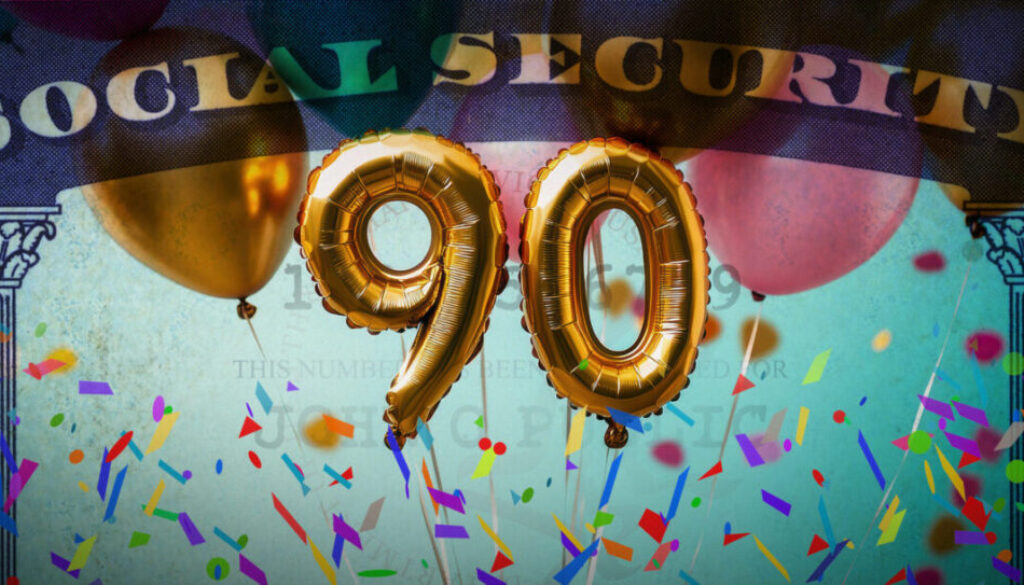As Social Security hits 90th anniversary, is ‘back-door’ privatization looming?

This month marks the 90th anniversary of Social Security, and while defenders of the program celebrate its legacy, they raise new warnings of what they call an increasingly real threat in the Trump era: privatization.
While wholesale replacement of the government-run retirement and disability program with private accounts has long been considered politically radioactive, advocates say recent actions by the Trump administration show it could happen, if not directly, then “through the back door.”
The idea of privatizing Social Security has bubbled up for decades. President George W. Bush’s 2005 push to divert payroll taxes into private investment accounts fizzled in the face of strong public resistance. Polls consistently show Americans are open to supplementing Social Security with personal savings but overwhelmingly oppose replacing its guaranteed benefits with market-based returns.
Nancy Altman, president of Social Security Works, says there are two distinct avenues for privatization: shifting benefits to private accounts, and outsourcing the program’s administration.
“This has been a desire of those who oppose Social Security forever,” she said, adding that Treasury Secretary Scott Bessent’s recent remarks about creating a “back door” to privatization confirmed those fears.
Institutional capacity being stripped away
On the operations side, former Social Security Commissioner Martin O’Malley — who ran the agency under President Biden — said the current administration has already stripped away much of the institutional capacity that makes the program function.
“It’s actually very complex work,” he said. “They are trying to wreck the program and wreck customer service in order to get away with privatizing it. But they are underestimating the complexity of what’s been done so well for 90 years.”
O’Malley points to a 50-year staffing low, the closure of field offices, and the reassignment of 1,000 front-line staff to call centers. The result: processing backlogs “going up, up” and field offices “teetering on the brink of collapse.”
To its supporters, Social Security is not just another government program — it’s a social insurance compact that underpins the financial stability of 73 million Americans.
“At its core, it is the most successful insurance program in the world,” said Rep. John Larson, D-Conn., ranking member of the Social Security Subcommittee. He noted the program’s administrative costs are under 1%, compared to 16–26% in the private insurance sector.
Social Security keeps many from falling into poverty
“Nobody gets wealthy on Social Security,” he said, “but it keeps people from falling into poverty.”
Sen. Bernie Sanders, I-Vt., calls it “the most popular government program in our nation’s history,” adding that before its creation in 1935, half of America’s seniors lived in poverty.
“Trump and [Elon] Musk and others have been working overtime to try to dismantle Social Security and undermine confidence in it,” Sanders said.
Conservative think tanks like the Cato Institute, along with some Republican lawmakers, have argued for decades that allowing workers to invest their payroll taxes could yield higher returns than the program’s current trust fund investments in Treasury bonds. Wall Street firms see an enormous new market in managing trillions in additional retirement assets.
“When Elon Musk peeled away the veneer and saw $2,700,000,000 of the people’s money in the trust fund, they were salivating over getting their hands on that,” said Rep. Larson.
Historically, markets have outpaced government bond returns, giving advocates for privatization reason for optimism. With greater individual control and flexibility, they reason, workers could tailor contributions or inheritance, and IRAs could play a bigger role in retirement planning. Also, with increased savings and capital formation, private accounts could boost national savings and stimulate economic growth
‘Everybody’s antenna should go up’
Actual Proposals range from full privatization to partial, voluntary accounts for younger workers. More recently, Sen. Bill Cassidy, R-La., floated a $1.5 trillion federal investment fund — financed by borrowing — that would supplement Social Security payouts with returns from the market. Larson acknowledged such ideas could have “productive” elements but warned that “everybody’s antenna should go up when you start looking at $2.7 trillion” in the trust fund. “This is not their money,” he said. “It’s the people’s money.”
Opponents warn that privatization shifts risk from the government to individuals, exposing retirees to market downturns that could wipe out savings just as they stop working. They also point to high transition costs — diverting payroll taxes into private accounts would require finding other revenue to pay current retirees, potentially adding trillions to the national debt.
Rep. Debbie Dingell, D-Mich., frames it as a matter of survival for many Americans.
“Two out of three seniors in this country now depend on that check to get by,” she said. “If they take away my Medicaid, is my husband going to be out on the street? Where are we going to live?”
The difference between dignity and despair
For many, she added, Social Security is “the difference between living in dignity and living in despair.”
Larson also stressed the macroeconomic impact. Every congressional district, he said, receives an average of $280 million in Social Security benefits each month, money that flows directly back into local economies.
“They’re not buying Maseratis,” he said. “They’re paying grocery bills, rent, mortgages, and heating oil.”
For progressives, the fight over privatization is not about solvency — it’s about priorities. Sanders, Larson, Dingell, and others advocate expanding benefits and shoring up the trust fund by lifting the cap on taxable wages, which currently stops at $176,000.
“If you lift that cap,” Sanders said, “we can substantially increase benefits and extend the life of Social Security for many decades.”
They also reject the argument that younger generations won’t see a return on their contributions.
Social Security is ‘not going away’
“Even the worst-case scenarios say Social Security will be there,” Larson said. “It might be reduced if nothing is done, but it’s not going away.”
Given the program’s broad popularity and the entrenched opposition to major changes, most analysts consider full privatization unlikely in the near term. But Democrats warn that incremental steps — starving the agency of resources, outsourcing operations, or diverting payroll tax revenue — could erode the system’s integrity over time.
Sen. Ron Wyden, D-Ore., likens the situation to Trump’s handling of Medicaid: “He talked a big game, said it was safe, and then turned around and did just the opposite.”
For now, the battle lines are clear: advocates see Social Security as a public trust too important to gamble on the markets, while privatization supporters frame it as a matter of individual choice and higher returns. As the program heads toward its centennial, the question may not be whether privatization will happen all at once, but whether it will happen piece by piece — unless its defenders can stop it.
© Entire contents copyright 2024 by InsuranceNewsNet.com Inc. All rights reserved. No part of this article may be reprinted without the expressed written consent from InsuranceNewsNet.com.
The post As Social Security hits 90th anniversary, is ‘back-door’ privatization looming? appeared first on Insurance News | InsuranceNewsNet.





